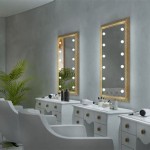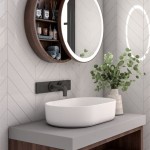Can You Replace a Mirror on a Closet Door? A Comprehensive Guide
Mirrored closet doors offer a blend of functionality and aesthetics, providing a full-length reflection while maximizing space in bedrooms, hallways, and dressing areas. However, accidental damage, age-related deterioration, or simply a desire for a different aesthetic may necessitate replacing the mirror on a closet door. This article will delve into the feasibility of replacing a mirror on a closet door, covering various aspects from assessing the damage, understanding the different types of mirrored closet doors, outlining the required tools and materials, and detailing the step-by-step process involved. It will also address potential challenges and safety considerations to ensure a successful outcome.
Before embarking on the replacement process, a thorough evaluation of the existing situation is essential. This involves determining the extent of the damage to the mirror, identifying the type of closet door, and assessing your own skill level in handling DIY projects. A superficial crack might be addressed with specialized repair kits, whereas a shattered or severely damaged mirror mandates replacement. Understanding the type of closet door – be it sliding, bi-fold, or hinged – is crucial as the removal and reinstallation procedures can vary significantly.
Furthermore, assessing your comfort level with tools and DIY tasks is paramount. Replacing a mirror involves working with glass, which presents inherent safety risks. If you are uncomfortable handling glass or lack the necessary tools and experience, engaging a professional glazier or handyman is a more prudent course of action.
Key Considerations Before Replacement
Several factors should be considered before initiating the replacement process. These considerations directly influence the success and cost-effectiveness of the project.
Firstly, the availability of a replacement mirror of the correct size and thickness is crucial. Custom-cut mirrors are readily available at most glass shops and home improvement stores. Accurate measurements are essential to ensure a proper fit. It is advisable to have the original mirror dimensions readily available for reference. Moreover, consider the thickness of the original mirror; using a different thickness can create alignment issues and affect the door's overall balance. Remember to specify whether you require tempered or annealed glass. Tempered glass is much stronger and shatters into small, relatively harmless pieces, making it a safer option, particularly in high-traffic areas. However, it cannot be cut after tempering, so precise measurements are critical.
Secondly, examine the method by which the original mirror is attached to the door. Common methods include adhesive, clips, or a combination of both. Understanding the attachment method will dictate the appropriate removal techniques and the type of adhesive or fasteners needed for reinstallation. Some adhesives are extremely strong and may require specialized solvents or tools for removal. Clips are generally easier to manage, but care must be taken not to damage the door frame when removing or reinstalling them.
Thirdly, assess the condition of the door frame itself. If the frame is damaged, warped, or rotting, replacing the mirror alone may not be sufficient. In such cases, replacing the entire door assembly may be a more viable long-term solution. Addressing any underlying structural issues with the door frame will ensure that the new mirror is securely and properly installed.
Tools and Materials Required
Successfully replacing a mirror on a closet door requires a specific set of tools and materials. Having these readily available before starting the project will streamline the process and minimize potential delays.
Essential tools include:
- Safety glasses: Protecting your eyes is paramount when working with glass.
- Work gloves: Providing a firm grip and protecting your hands from cuts.
- Putty knife or scraper: For carefully removing the old mirror and adhesive.
- Heat gun (optional): To soften stubborn adhesive.
- Measuring tape: For accurate measurements of the replacement mirror.
- Level: To ensure the new mirror is installed straight.
- Caulk gun: For applying adhesive or sealant.
- Drill or screwdriver: Depending on the type of fasteners used.
- Clean cloths: For cleaning the door and the new mirror.
- Razor blade scraper: For removing any remaining adhesive residue.
Required materials include:
- Replacement mirror (correct size and thickness).
- Mirror mastic adhesive: Specifically designed for adhering mirrors to surfaces.
- Mirror clips (if applicable): Matching the type used on the original mirror.
- Solvent (such as mineral spirits or Goo Gone): For removing adhesive residue.
- Painter's tape: For temporarily securing the mirror during adhesive curing.
- Shims (optional): For adjusting the mirror's alignment.
It is always advisable to have extra supplies on hand, such as additional adhesive or fasteners, in case of unexpected issues.
Step-by-Step Replacement Process
The replacement process can be divided into several distinct stages, each requiring careful attention to detail. These stages are outlined below:
Step 1: Preparation and Safety: Begin by laying down drop cloths to protect the floor from glass shards and adhesive. Wear safety glasses and work gloves throughout the entire process. Ensure adequate ventilation in the work area.
Step 2: Removing the Old Mirror: If the mirror is held in place by clips, carefully remove them using a screwdriver or pliers. Start by loosening the clips and then gently prying them away from the mirror. If the mirror is primarily attached with adhesive, use a putty knife or scraper to gently pry the mirror away from the door. Work slowly and carefully to avoid shattering the mirror. A heat gun can be used to soften the adhesive if it is particularly stubborn. Insert the putty knife between the mirror and the door frame, applying gentle pressure. If the mirror is severely damaged, carefully tape it with heavy-duty packing tape before attempting to remove it. This will help to contain the glass shards.
Step 3: Cleaning the Door Surface: Once the old mirror is removed, thoroughly clean the door surface to remove any remaining adhesive residue. Use a solvent, such as mineral spirits or Goo Gone, to soften the adhesive. Scrape away the softened adhesive with a razor blade scraper. Be careful not to damage the door's surface. After removing the adhesive, clean the door with a damp cloth and allow it to dry completely.
Step 4: Applying Adhesive: Apply mirror mastic adhesive to the back of the new mirror in vertical beads, spaced several inches apart. Avoid applying adhesive too close to the edges of the mirror, as it may squeeze out when the mirror is pressed against the door. Follow the manufacturer's instructions regarding the amount of adhesive to use and the curing time.
Step 5: Installing the New Mirror: Carefully position the new mirror on the door, ensuring it is aligned correctly. Press the mirror firmly against the door, applying even pressure across the entire surface. Use painter's tape to temporarily secure the mirror in place while the adhesive cures. If using mirror clips, reinstall them to provide additional support. Use shims, if necessary, to adjust the mirror's alignment.
Step 6: Curing and Finishing: Allow the adhesive to cure completely according to the manufacturer's instructions. This may take 24 to 48 hours. Once the adhesive is cured, remove the painter's tape. Inspect the installation and address any minor imperfections. Clean the mirror with a glass cleaner to remove any smudges or fingerprints.
Potential Challenges and Mitigation Strategies
Despite careful planning and execution, certain challenges may arise during the mirror replacement process. Being prepared for these potential issues and having mitigation strategies in place can help ensure a successful outcome.
One common challenge is dealing with stubborn adhesive. If the adhesive is extremely difficult to remove, prolonged soaking with a solvent and repeated scraping may be necessary. Avoid using excessive force, as this could damage the door's surface. Using a heat gun carefully can soften the adhesive and make it easier to remove but be cautious not to overheat the area which may damage the door's finish. If the original adhesive is causing significant issues, consult with a professional regarding suitable solvents and removal methods.
Another potential challenge is ensuring proper alignment of the new mirror. Imperfect alignment can create a visually unappealing result. Using a level and shims during installation is crucial for achieving proper alignment. Double-check the alignment frequently as the adhesive cures. If the door frame itself is not perfectly square, it may be necessary to compromise on perfect alignment to avoid creating gaps or unevenness.
Finally, handling broken glass safely is paramount. If the old mirror shatters during removal, exercise extreme caution. Wear heavy-duty work gloves and use a broom and dustpan to carefully sweep up the glass shards. Dispose of the broken glass properly in a designated container labelled for sharp objects. Avoid using a vacuum cleaner, as this could damage the vacuum and spread glass particles.

Affordable Solutions For Updating Mirrored Closet Doors In Your Home Mirror Sliding Door Alternative

Sliding Closet Door Makeover With Paint Tape Making Maanita

20 Diy Closet Mirror Door Makeover Angela Rose Home

How To Cover Closet Door Mirrors Easily

Affordable Solutions For Updating Mirrored Closet Doors In Your Home Mirror Door Makeover Sliding

Sliding Closet Door Makeover With Paint Tape Making Maanita

Mirrored Closet Door Makeover

Affordable Solutions For Updating Mirrored Closet Doors In Your Home Mirror Sliding Door Makeover

How To Update Mirrored Closet Doors The Good Bad And Ugly

Sliding Closet Door Makeover With Paint Tape Making Maanita








